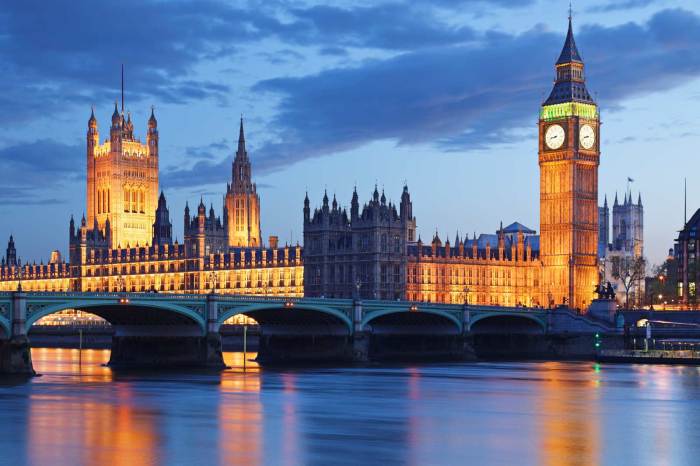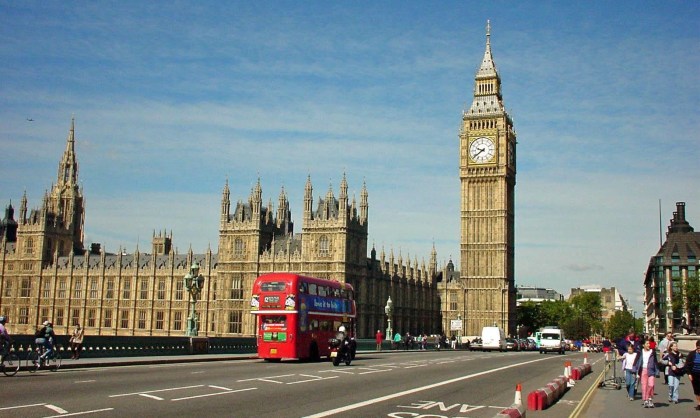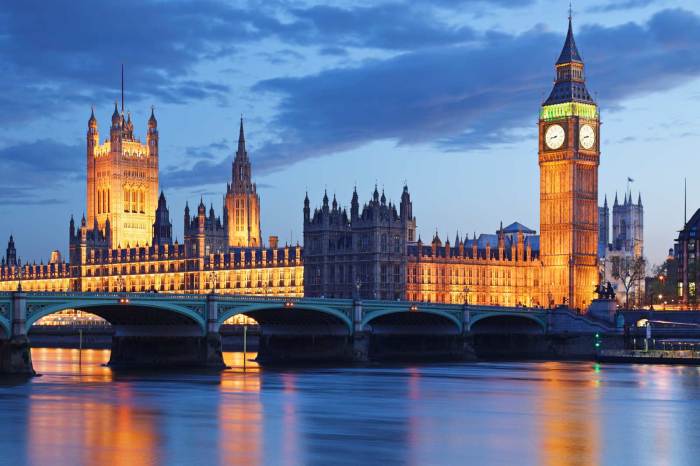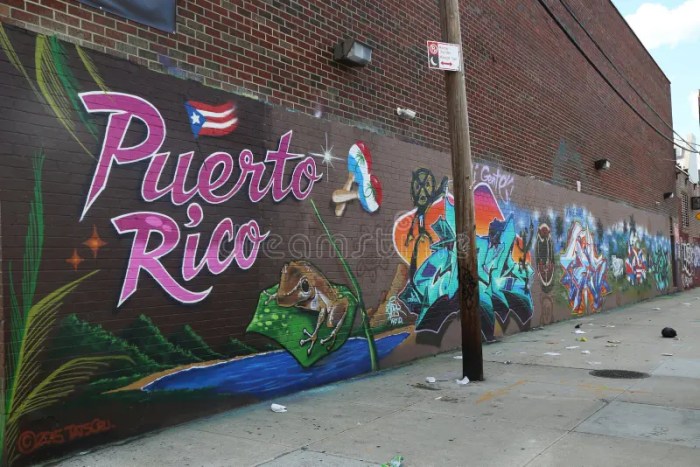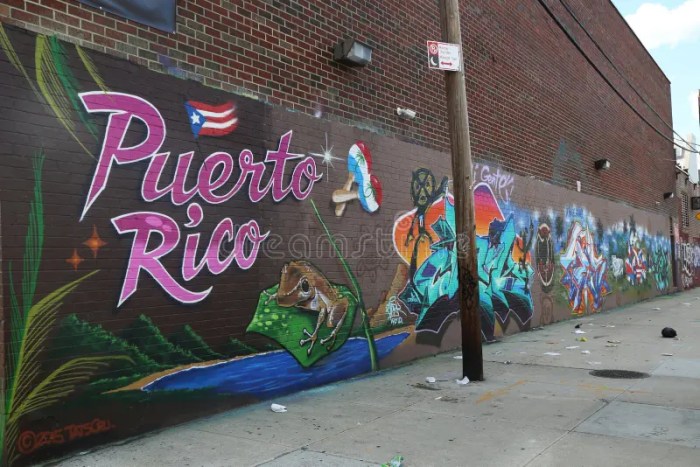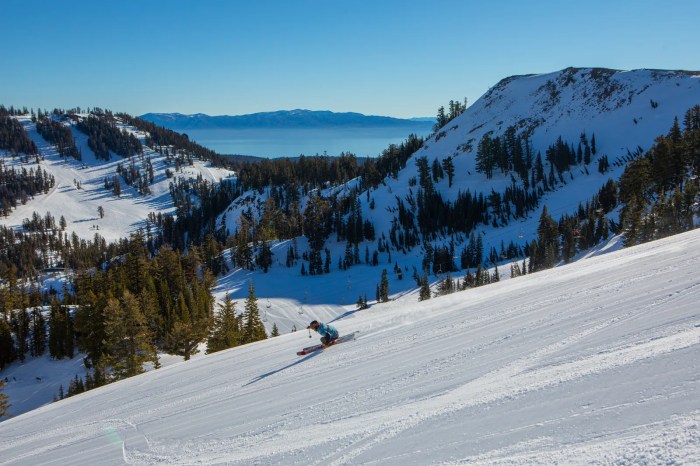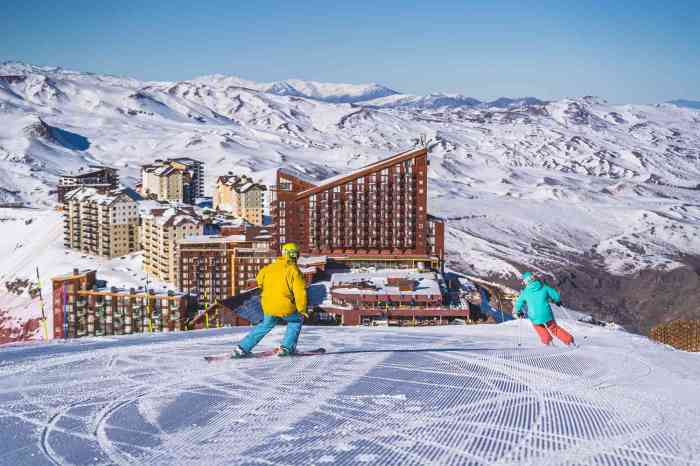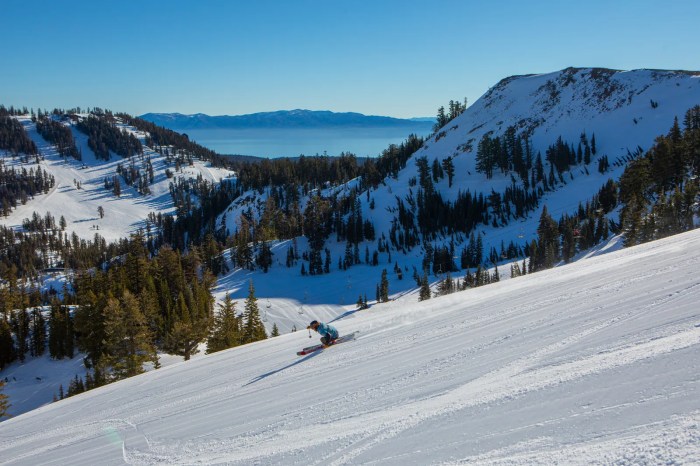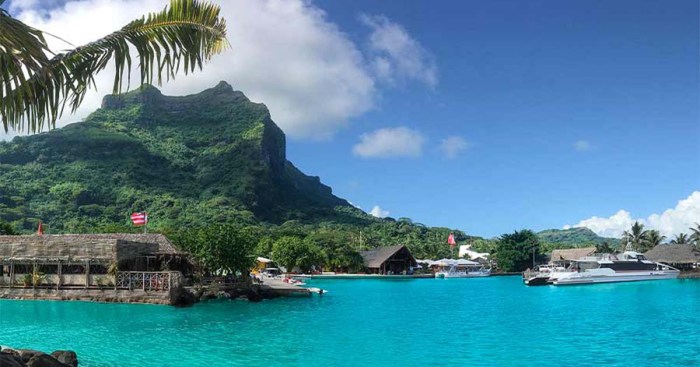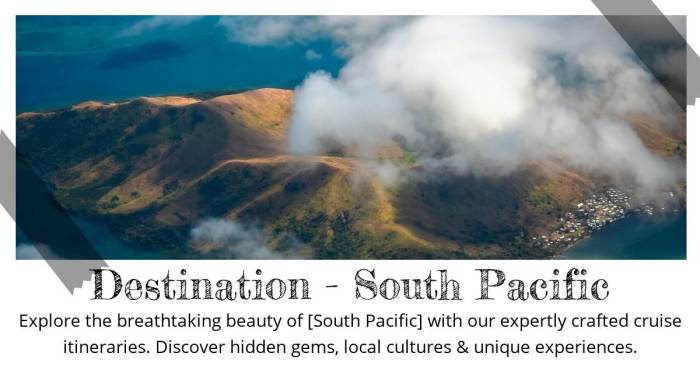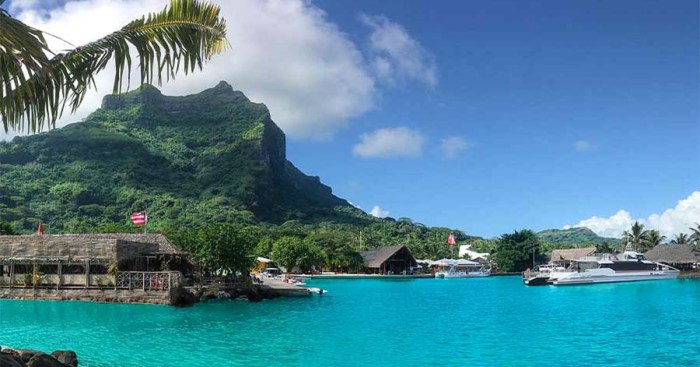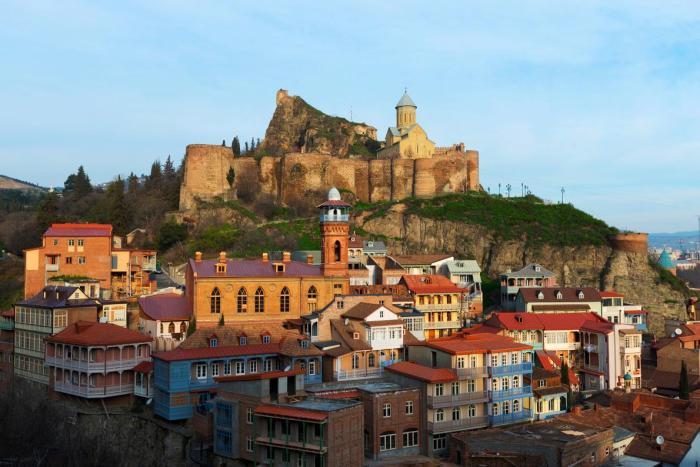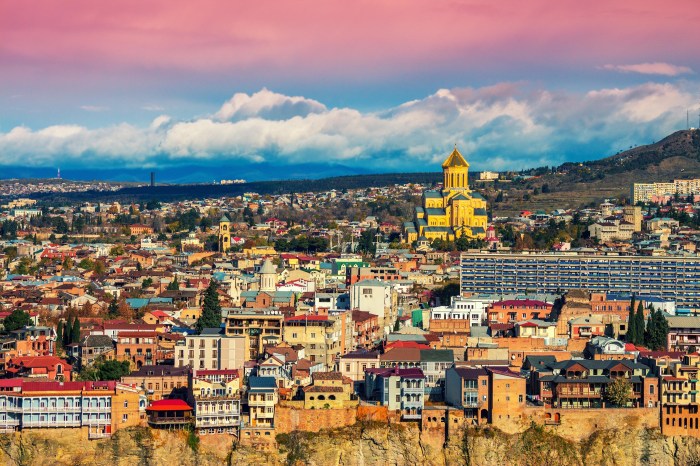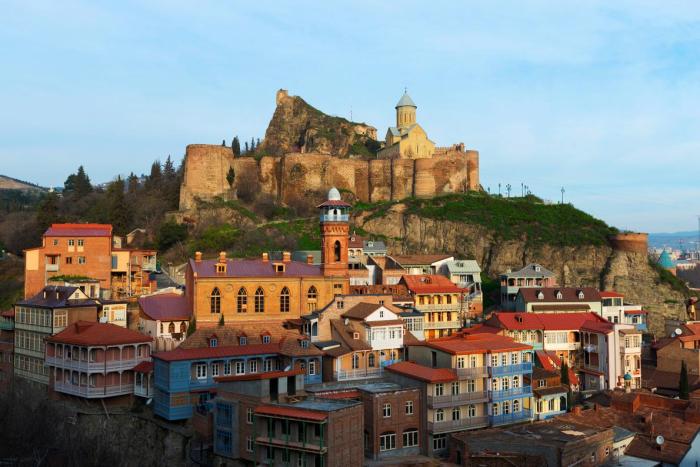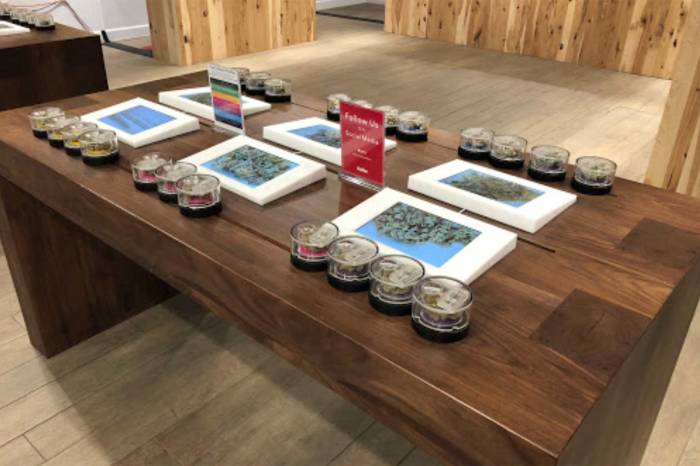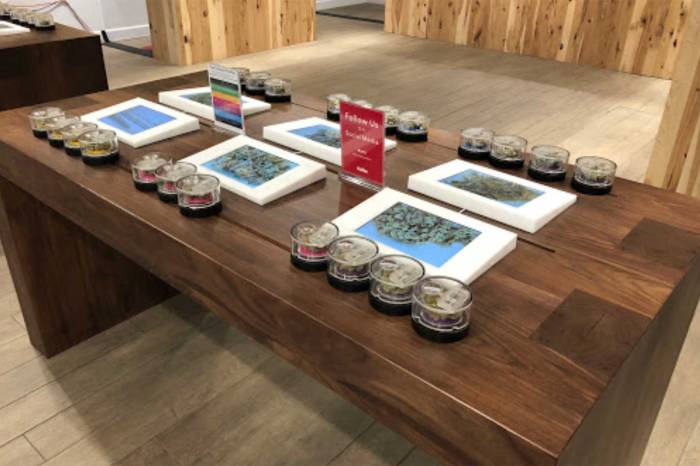Top things to do in Dubai: From iconic landmarks to thrilling adventures, Dubai offers an unforgettable experience for every traveler. This guide dives deep into the city’s diverse attractions, exploring everything from its rich history and cultural significance to modern marvels and exciting activities.
Discover the best of Dubai, whether you’re seeking luxury shopping sprees, delectable culinary adventures, or adrenaline-pumping outdoor experiences. This comprehensive guide covers everything from iconic skyscrapers to vibrant nightlife, ensuring you have a well-rounded picture of the incredible experiences Dubai has to offer.
Introduction to Dubai
Dubai, a city-state in the United Arab Emirates, stands as a captivating blend of ancient traditions and futuristic innovation. Its allure lies in its breathtaking architecture, vibrant cultural experiences, and a relentless pursuit of progress. From soaring skyscrapers to pristine beaches, Dubai offers an unparalleled spectacle of human achievement and a mesmerizing journey through time. Its rich history, combined with its modern marvels, draws visitors from all corners of the globe.The city’s rapid transformation from a modest pearl-diving community to a global economic powerhouse is a testament to its ambition and strategic vision.
This evolution has shaped Dubai’s identity, attracting a diverse range of people seeking unique experiences and opportunities. Its unique blend of traditional values and cutting-edge technology makes it a truly remarkable destination.
Attractions and Appeal
Dubai’s appeal extends beyond its stunning architecture. It offers a diverse range of attractions, from luxurious shopping malls and world-class dining experiences to thrilling theme parks and serene desert landscapes. The city’s commitment to providing a memorable experience for all visitors, regardless of their interests, is a key element of its appeal.
Historical Context and Cultural Significance
Dubai’s history is deeply rooted in its maritime heritage. Traditionally, pearl diving and trade were integral parts of the community. The city’s cultural heritage is evident in its traditional architecture, local crafts, and the preservation of historical sites. This heritage serves as a foundation for the city’s modern identity, blending ancient traditions with the contemporary dynamism. Visitors can experience the past through museums and historical tours, offering a profound appreciation for the city’s roots.
Modern Developments and Infrastructure
Dubai’s modern developments are legendary. The city has relentlessly invested in infrastructure, creating a seamless and efficient environment for both residents and tourists. This commitment is evident in its world-class transportation systems, cutting-edge communication networks, and the constant emergence of new landmarks. This focus on infrastructure and technological advancements creates a truly unique and modern urban experience, unparalleled by many other cities globally.
Types of Visitors
Dubai attracts a diverse range of visitors. Luxury travelers are drawn to the opulence and exclusivity of the city’s high-end hotels and shopping experiences. Families enjoy the numerous theme parks, water parks, and entertainment options tailored to children. Business travelers find Dubai to be a crucial hub for international trade and commerce, with efficient business facilities and strategic location.
Adventurous tourists can explore the desert landscapes, enjoy thrilling activities, and experience the vibrant nightlife.
Iconic Landmarks and Architectural Marvels
Dubai’s architectural landscape is a testament to its ambition and rapid development. From futuristic skyscrapers to intricate historical structures, the city boasts a stunning array of iconic landmarks. These marvels, often blending traditional design elements with modern innovations, showcase Dubai’s unique identity and global appeal. The city’s dedication to pushing the boundaries of design and engineering is evident in every building, a reflection of the dynamic spirit of the Emirate.
Top 5 Iconic Landmarks
Dubai’s skyline is a captivating tapestry of architectural wonders, each a story in itself. These five landmarks, chosen for their unique designs and cultural significance, stand as testaments to the city’s ingenuity and vision.
Dubai’s got amazing attractions, from soaring skyscrapers to dazzling desert adventures. But sometimes, even a fantastic vacation can be marred by long wait times, like at the airport. Interestingly, innovative technology is being developed to combat these delays, like with tsa wait times technology , which could drastically improve the travel experience. Luckily, Dubai’s offerings are so varied, you’ll find plenty of ways to fill your time regardless of any potential airport delays!
| Name | Description | Location | Image Description |
|---|---|---|---|
| Burj Khalifa | The world’s tallest building, a soaring glass and steel structure, reflecting modern design principles. Its distinctive Y-shaped form is iconic and impressive. The exterior features a complex facade that subtly shifts in appearance depending on the angle of the sun. | Downtown Dubai | A sleek, slender tower piercing the sky, reaching towards the heavens. Its glittering exterior reflects the surrounding city, shimmering in the light. |
| Burj Al Arab | A luxurious, sail-shaped hotel, a striking example of architectural innovation, blending traditional Arabian design elements with contemporary aesthetics. The intricate details of the facade and the graceful curves of the building are noteworthy. | Dubai Marina | A majestic sail-shaped structure, resembling a majestic ship, perched elegantly on the coastline. The hotel’s unique form stands out against the surrounding skyline. |
| Dubai Mall | A colossal shopping and entertainment complex, showcasing modern architecture with large glass facades and open spaces. The vast indoor space is an impressive example of modern design, blending practicality with aesthetics. | Downtown Dubai | A massive, multi-level structure, with large glass walls, providing a stunning view of the city. The vast interior space houses numerous stores, restaurants, and attractions. |
| Palm Jumeirah | An artificial archipelago shaped like a palm tree, showcasing ambitious coastal development projects. The design combines innovative engineering with picturesque landscapes. | Dubai Coastline | An artificial island shaped like a palm tree, extending into the ocean. The structure, designed with meticulous care, is a significant addition to the Dubai landscape. |
| The Dubai Fountain | A spectacular choreographed water and light show, situated at the base of the Burj Khalifa. The design integrates the latest technology with artistry, creating a mesmerizing spectacle. | Downtown Dubai | A dynamic display of water jets and light projections, showcasing a harmonious blend of engineering and art. The rhythmic movements of the water and light are a captivating sight. |
Architectural Styles and Design Elements
The architectural styles used in these landmarks are diverse, reflecting a blend of traditional Arabian influences and modern global trends. Many buildings showcase a fusion of Islamic architectural principles, including intricate geometric patterns and the use of light and shadow. Contemporary designs often prioritize functionality, incorporating sustainable practices and innovative engineering solutions.
History and Significance
The history of these landmarks reflects Dubai’s rapid transformation from a small trading port to a global hub. The Burj Khalifa, for example, stands as a symbol of Dubai’s ambition and its drive to push the boundaries of engineering and design. Each landmark carries a unique story, contributing to Dubai’s rich tapestry of modern marvels and cultural heritage.
Experiences and Activities
Dubai offers a vibrant tapestry of experiences, catering to diverse interests. From thrilling adventures to luxurious shopping sprees and delectable dining, the city has something to captivate every visitor. Embark on a journey of discovery, exploring the unique attractions and activities that make Dubai a truly unforgettable destination.Beyond the iconic skyscrapers and bustling markets, Dubai’s allure lies in the rich tapestry of experiences it provides.
These activities extend far beyond the superficial, immersing visitors in the culture and vibrancy of the city. Whether you seek adrenaline-pumping adventures or a leisurely exploration of culinary delights, Dubai has you covered.
Adventure Activities
Dubai’s desert landscapes provide unparalleled opportunities for thrilling adventures. From exhilarating dune bashing to tranquil camel rides, the desert offers a unique perspective on the city’s beauty. Choosing the right activity depends on your preferred level of excitement and desired experience.
| Activity | Description | Location |
|---|---|---|
| Dune Bashing | Experience the thrill of a 4×4 adventure across the golden dunes. Options range from short, introductory tours to extended expeditions, often featuring sunset views. Consider factors like vehicle type, driver expertise, and safety protocols when selecting a tour. | Dubai Desert Conservation Reserve, Liwa Desert |
| Desert Safari | Combine dune bashing with other activities like camel riding, quad biking, sandboarding, and a traditional Bedouin dinner under the stars. These safaris often include a cultural experience, showcasing Bedouin traditions. | Dubai Desert Conservation Reserve, Liwa Desert |
| Skydiving | Experience the ultimate adrenaline rush with a skydiving adventure over Dubai. Choose from various packages offering different durations and heights. Consider your experience level and the safety measures provided by the operators. | Dubai |
| Skiing | Enjoy a unique winter experience at Ski Dubai, an indoor ski resort. This is a perfect option for those who want to experience the thrill of skiing and snowboarding in a controlled environment, regardless of the weather. | Ski Dubai |
Shopping Experiences, Top things to do in dubai
Dubai’s shopping scene is legendary, offering everything from high-end designer boutiques to bustling souks. The variety of options caters to diverse budgets and preferences.
| Activity | Description | Location |
|---|---|---|
| Shopping at the Mall of the Emirates | Experience world-class shopping with an array of designer stores, entertainment options, and an ice rink. | Mall of the Emirates |
| Exploring the Gold Souk | Immerse yourself in the vibrant atmosphere of the Gold Souk, where you can find an array of gold jewelry, precious stones, and other treasures. Bargaining is a common practice here. | Deira |
| Visiting the Dubai Mall | The Dubai Mall is a massive shopping complex with various shops, an aquarium, and ice rink. It is an ideal spot for shopping and entertainment, combining a variety of activities. | Downtown Dubai |
| Shopping at the Dubai Marina | Enjoy a unique shopping experience at the Dubai Marina, where you’ll find upscale boutiques and international brands. | Dubai Marina |
Dining Experiences
Dubai’s culinary scene is renowned for its diverse offerings, from traditional Middle Eastern cuisine to international flavors. The options are vast and cater to every palate and budget.
| Activity | Description | Location |
|---|---|---|
| Fine Dining Experiences | Indulge in exquisite meals at Michelin-starred restaurants or upscale establishments offering innovative culinary experiences. | Downtown Dubai, Jumeirah |
| Traditional Emirati Cuisine | Experience the flavors of Emirati culture by trying dishes like machboos, harees, and luqaimat. Find authentic restaurants in the old city or specialized restaurants. | Deira, Bur Dubai |
| International Cuisine | Discover a wide array of international cuisines, including Italian, Japanese, French, and more, at restaurants throughout the city. | Across Dubai |
| Street Food Adventures | Explore the vibrant street food scene for an authentic and budget-friendly experience. Discover unique and delicious options. | Various locations across Dubai |
Shopping and Retail Therapy
Dubai’s shopping scene is legendary, a vibrant tapestry woven with luxury boutiques, bustling souks, and modern malls. From high-end designer labels to local crafts, the city caters to every shopping appetite. It’s more than just retail therapy; it’s an immersive cultural experience. The sheer scale and variety of offerings make it a shopper’s paradise.Dubai’s malls aren’t just buildings; they are meticulously designed destinations.
They combine architectural marvels with unparalleled shopping experiences. The vast spaces and carefully curated displays create a captivating atmosphere that draws visitors in.
Shopping Malls in Dubai
Dubai’s shopping malls are renowned for their size, opulence, and diversity. They provide a unique blend of retail experiences, from luxury goods to local crafts. They are more than just places to shop; they are destinations in themselves.
| Shopping Mall | Location | Type of Shopping | Unique Features |
|---|---|---|---|
| Dubai Mall | Downtown Dubai | Luxury, fashion, electronics, home goods, entertainment | Burj Khalifa connection, Dubai Aquarium & Underwater Zoo, Ice Rink, world-class cinema |
| Mall of the Emirates | Emirates Hills | Luxury, fashion, family entertainment, ski resort | Ski Dubai, snow park, extensive dining options |
| Ibn Battuta Mall | Jumeirah | International themed shopping, souvenirs, diverse cuisine | Inspired by Ibn Battuta’s travels, featuring different architectural styles representing his journey |
| The Dubai Mall | Downtown Dubai | Luxury, fashion, home decor, accessories, global brands | High-end boutiques, diverse collection of international brands, exceptional design |
Types of Shopping Experiences
The shopping experience in Dubai extends beyond the typical mall. Different types of shopping cater to diverse needs and preferences.
Dubai’s got amazing sights, from the Burj Khalifa to the desert adventures. However, before you jet off to the sands of the UAE, consider what to expect when traveling to Tenerife, a stunning Canary Island. Things to know before traveling to Tenerife will help you prepare for the beautiful volcanic landscapes and vibrant culture. Ultimately, Dubai offers a memorable mix of modern marvels and ancient traditions.
- Luxury Shopping: Dubai is a global hub for high-end fashion and luxury goods. High-end boutiques, exclusive showrooms, and designer showrooms offer the finest in international brands. Expect to find the latest collections and bespoke pieces.
- Local Shopping: Beyond the glitz and glamour, Dubai offers a glimpse into local culture. Traditional souks (markets) provide opportunities to discover unique handicrafts, local spices, and traditional clothing. These markets are a vibrant cultural experience, where the aroma of spices and the sounds of bargaining fill the air. Shopping in the souks can be a truly immersive and authentic experience.
- Traditional Shopping: Experience the heart of Emirati culture through the souks. These traditional markets offer a treasure trove of handcrafted items, traditional garments, and spices. Bargaining is a common practice and an integral part of the experience.
Unique Shopping Experiences
Dubai offers more than just malls. These experiences provide a deeper connection to the city’s culture and heritage.
- Desert Shopping: Embark on a unique shopping adventure in the vast expanse of the Dubai desert. Many desert camps offer an experience of shopping for souvenirs and handicrafts while enjoying the beauty of the desert environment. A perfect blend of cultural immersion and natural beauty.
- Souk Experiences: Step into the bustling atmosphere of the traditional souks. These markets are a vibrant tapestry of colors, scents, and sounds. From the Gold Souk’s dazzling displays of jewelry to the Spice Souk’s aromatic delights, exploring the souks is an experience in itself.
- Luxury Shopping Destinations: Dubai’s shopping scene extends beyond malls. Exclusive boutiques and showrooms provide a sophisticated shopping experience, showcasing the finest designer collections. A curated experience for discerning shoppers.
Food and Culinary Delights
Dubai’s culinary scene is a vibrant tapestry woven from global influences. From traditional Arabic flavours to international cuisine, the city offers a diverse and exciting gastronomic experience. The sheer variety of restaurants caters to every palate and budget, making it a paradise for food enthusiasts. The city’s commitment to innovation is evident in the fusion dishes that blend local traditions with international styles.The sheer volume of options can be overwhelming, but this guide will help you navigate the diverse culinary landscape, highlighting some of the best restaurants and local specialties.
Dubai boasts stunning skyscrapers and incredible desert adventures, but if you’re looking for a unique American experience, check out the Kansas City Missouri guide for a fascinating look at the city’s vibrant culinary scene and historical landmarks. From bustling souks to serene beaches, Dubai offers a world of unforgettable experiences, perfect for any traveler. Exploring the city’s diverse attractions is truly a treat.
Whether you crave a traditional Emirati meal or an innovative fusion creation, Dubai has something to offer.
Top Restaurants by Cuisine
Dubai boasts an impressive array of restaurants catering to various culinary tastes. The following selection represents a sampling of the city’s diverse and high-quality dining options.
- Arabic Cuisine: Experience the rich heritage of Arabic cooking with authentic dishes like machboos, harees, and various grilled meats. Restaurants like Al Fanar and Al Maqam offer traditional ambiance and authentic flavours, providing an immersive cultural experience.
- Indian Cuisine: Dubai’s Indian restaurants cater to the extensive diversity of Indian cuisine. From North Indian curries and tandoori dishes to South Indian dosas and idlis, there’s something to satisfy every Indian food craving. Expect restaurants like Masala Bay and Bombay Bungalow to showcase the regional diversity of Indian cuisine.
- International Cuisine: Dubai’s international scene offers a diverse selection of cuisines. From Italian trattorias to French bistros and American steak houses, you’ll find a variety of globally-renowned restaurants with impeccable service and quality ingredients. Some popular options include the renowned Nusr-Et steakhouse and various upscale international restaurants.
Local Specialties and Traditional Dishes
Dubai’s culinary heritage is deeply rooted in its Arab traditions. Many dishes reflect the region’s history and cultural influences. These dishes often incorporate locally sourced ingredients and are a testament to the country’s commitment to quality.
- Machboos: A traditional Emirati rice dish, often seasoned with saffron, spices, and meat. The flavourful combination of spices and rice makes it a popular choice for many locals and visitors alike.
- Harees: A hearty and flavorful dish made with wheat, meat, and spices, usually served during special occasions. Its rich flavour profile and hearty texture make it a beloved traditional Emirati dish.
- Luqaimat: A sweet treat consisting of small fried dough balls, often served with syrup and nuts. It’s a delicious dessert that is frequently found in traditional Emirati restaurants.
Fusion Cuisine Options
Dubai’s culinary scene is not just about showcasing traditional dishes. Fusion cuisine is a significant part of the city’s culinary evolution.
- Global Fusion: Dubai’s fusion cuisine scene blends global flavours in innovative ways. Expect to find restaurants that seamlessly merge elements from various cultures, creating exciting and flavourful culinary experiences. Some restaurants combine elements of Asian, Mediterranean, and Middle Eastern flavours.
Outdoor Adventures and Activities
Dubai’s desert landscapes offer a unique opportunity to experience thrilling outdoor adventures. From exhilarating dune bashing to serene desert camping, the city provides a range of activities for thrill-seekers and nature enthusiasts alike. Embark on unforgettable journeys through the vast expanse of the Arabian desert, witnessing the beauty of the golden dunes and the star-studded nights.Dubai’s outdoor adventures cater to a wide spectrum of preferences.
Whether you crave adrenaline-pumping activities or a tranquil escape into nature, Dubai has something to offer. The experience is often tailored to various budgets and interests, ensuring a memorable time for everyone.
Desert Safari Experiences
Desert safaris are a popular choice for visitors seeking an immersive Arabian adventure. These tours typically include a range of activities, offering a taste of the local culture and a glimpse into the desert’s allure.
- Dune Bashing: This exhilarating experience involves navigating the undulating dunes in a 4×4 vehicle. Expect a thrilling ride over sand dunes, with the vehicle skillfully maneuvering through the varied terrain. The experience provides an opportunity to witness the beauty of the desert landscape from a unique perspective. The journey is often accompanied by experienced drivers who know the terrain well.
- Camel Riding: A classic desert experience, camel riding offers a chance to interact with these majestic creatures. A serene and traditional way to traverse the desert, camel riding is a chance to witness the desert from a different angle. Various levels of camel riding tours are available, catering to the needs of both experienced and novice riders. The experience allows for reflection on the desert’s charm.
- Sandboarding: A fun and exciting way to experience the desert, sandboarding allows for a descent down the sandy slopes. The experience is usually offered as part of a desert safari, often combined with other activities like dune bashing and camel riding. The activity is often suitable for individuals of varying skill levels.
- BBQ Dinner Under the Stars: Culminating the desert safari experience is a traditional Bedouin BBQ dinner. Enjoy a delicious meal under the vast expanse of the night sky, experiencing a cultural immersion into the desert’s charm. The atmosphere is often accompanied by entertainment, such as traditional music and dance performances. The food is prepared with fresh ingredients and local spices, offering a taste of authentic Arabian cuisine.
Locations for Desert Adventures
Several locations offer exceptional desert safari experiences.
- Dubai Desert Conservation Reserve: Known for its vast expanse of desert landscapes, this reserve provides an ideal setting for dune bashing and other outdoor adventures. It’s a popular location due to its natural beauty and the variety of activities available.
- Liwa Desert: This expansive desert, located further from the city center, provides a more secluded and authentic desert experience. It’s known for its vastness and unique beauty, offering a truly unforgettable desert journey. Liwa is often a choice for longer trips with a more immersive experience.
- Dubai Desert Safari Camps: Numerous camps offer a wide range of packages, encompassing accommodation, activities, and dining. They provide a complete desert experience, ranging from budget-friendly options to luxurious stays. This allows for flexibility in choosing a camp that best suits your needs and preferences.
Best Times for Desert Adventures
The best time to participate in desert adventures in Dubai is generally during the cooler months, from November to April. These months offer pleasant temperatures, ideal for outdoor activities, and fewer chances of extreme heat. The warm days and cool nights of these months are optimal for enjoying the desert landscape without discomfort.
Nightlife and Entertainment: Top Things To Do In Dubai
Dubai’s nightlife scene is a vibrant tapestry woven from high-end clubs, sophisticated bars, and unique entertainment experiences. From dazzling light shows to captivating live performances, the city offers something for every taste and preference. The atmosphere is electric, a mix of modern luxury and traditional Arabian charm, drawing visitors from across the globe.Dubai’s nightlife caters to a wide spectrum of desires, from those seeking high-energy clubbing to those preferring intimate settings for conversation and relaxation.
The city’s diverse options allow for a truly personalized experience, no matter the preferred style.
Clubs and High-Energy Environments
Dubai’s clubs are renowned for their opulent decor, cutting-edge sound systems, and world-class DJs. These venues often host international DJs and artists, offering a dynamic and energetic experience. The atmosphere is typically upscale and vibrant, creating a unique mix of luxury and exhilaration. Examples include the renowned clubs within the Burj Al Arab and Atlantis, the Palm, both known for their impressive ambiance and high-profile events.
Bars and Relaxed Settings
Dubai boasts a wide array of bars, from chic lounges to traditional Arabic cafes. These venues offer a more relaxed atmosphere, ideal for catching up with friends or enjoying a pre-dinner drink. The ambiance ranges from intimate and cozy to vibrant and lively, reflecting the diverse tastes of the city’s clientele. These establishments often feature live music or DJ performances, creating a sophisticated yet approachable environment.
Live Music and Entertainment Venues
Dubai’s live music scene is diverse and includes venues hosting everything from acoustic performances to rock concerts. Many establishments cater to a wide range of musical genres, allowing for a truly immersive experience. This aspect of Dubai’s nightlife complements the city’s diverse cultural landscape, reflecting its commitment to providing entertainment for every musical preference. Shows featuring traditional Arabian music are also common, allowing visitors to experience a deeper cultural connection.
Popular Entertainment Shows
Dubai’s entertainment scene includes spectacular shows that blend captivating performances with breathtaking visuals. These shows often combine music, dance, and elaborate staging, providing a truly immersive and memorable experience. For instance, the Dubai Fountain show, with its choreographed water and light displays, is a must-see, drawing crowds from all corners of the city. Similar shows, featuring diverse themes, are common in many hotels and resorts.
Catering to Different Preferences
Dubai’s nightlife successfully caters to diverse preferences. The wide array of venues, from luxurious clubs to intimate bars, allows visitors to select establishments that align with their specific desires. Whether seeking a high-energy clubbing experience or a relaxed setting for conversation, Dubai has a venue that fits the bill. This adaptability is a key factor in the city’s popularity as a global entertainment hub.
Culture and Traditions
Dubai, a city of breathtaking modernity, also boasts a rich tapestry of cultural traditions, woven into its very fabric. The city’s unique blend of old and new is evident in its embrace of diverse cultures and the preservation of age-old customs. This cultural richness is a significant part of the visitor experience, offering insights into the region’s history and heritage.Dubai’s multicultural environment is a defining characteristic.
Immigrants from around the globe have contributed to a vibrant mix of traditions, languages, and cuisines, enriching the city’s overall atmosphere. This multiculturalism is not just visible in the city’s diverse population; it also manifests in its architecture, art, and culinary scene.
Cultural Diversity
Dubai’s population is remarkably diverse, encompassing people from various backgrounds and nationalities. This diversity is reflected in the city’s vibrant markets, bustling streets, and residential neighborhoods. The presence of individuals from across the globe has contributed to a rich exchange of ideas, customs, and traditions. This cross-cultural exchange is a crucial component of Dubai’s unique appeal.
Local Traditions and Customs
Respecting local customs is essential for a positive experience in Dubai. Many traditional practices, deeply rooted in Islamic culture, are interwoven into daily life. For example, modesty in dress is generally observed in public spaces, particularly within religious sites. It is important to be mindful of these customs to ensure respect for the local population.
Important Festivals and Events
Dubai hosts a plethora of festivals and events throughout the year, each celebrating a specific aspect of the city’s culture and heritage. These events provide a unique opportunity to immerse oneself in local traditions. The Dubai Shopping Festival, for example, is a large-scale celebration encompassing a range of cultural performances, entertainment, and retail opportunities.
Contribution to the Overall Visitor Experience
Dubai’s cultural tapestry significantly enhances the overall visitor experience. The city’s diverse population, traditional customs, and cultural events offer a unique insight into the region’s rich heritage. Visitors can witness a harmonious blend of modern innovation and ancient traditions, making their experience both enriching and unforgettable. The city’s cultural richness is not merely a backdrop; it is an integral part of the experience itself.
Practical Information for Tourists
Dubai, a city of dazzling contrasts, welcomes visitors with open arms. However, a little preparation can go a long way in ensuring a smooth and enjoyable trip. From navigating the city’s efficient transport system to understanding visa requirements, this section provides essential details for your Dubai adventure.Planning a trip involves more than just booking flights and hotels. Thorough research into visa procedures, currency exchange rates, and local transportation systems allows you to fully immerse yourself in the experience.
This section will Artikel the necessary steps for a seamless and stress-free Dubai vacation.
Visa Requirements
Dubai offers visa-free entry for citizens of many countries. However, it’s crucial to check the specific visa regulations for your nationality well in advance of your trip. The official Dubai government website provides up-to-date information. Knowing the necessary documentation and any potential fees is essential for a smooth entry process. This information ensures a positive and hassle-free arrival experience.
Currency Exchange
The official currency of the UAE is the UAE Dirham (AED). While many establishments accept major credit cards, it’s advisable to exchange some currency beforehand for smaller purchases or unexpected expenses. Numerous exchange bureaus are available in the city, and banks also offer exchange services. The exchange rate can vary, so it’s worth comparing rates to get the best deal.
Checking the current exchange rate before your trip will help you make informed decisions.
Transportation
Dubai boasts an extensive and efficient transportation network. The metro system is a convenient and cost-effective way to travel across the city, with various lines connecting key destinations. Taxis and ride-sharing services are readily available, offering another option for navigating the city. For longer distances or tours, consider pre-booked airport transfers or private car services. Choosing the most suitable mode of transportation depends on your budget and the distance to be covered.
Consider the different options to determine the best one for your needs.
Useful Apps and Resources
Numerous apps and online resources can enhance your Dubai experience. Ride-hailing apps like Careem and Uber provide convenient and reliable transportation options. Tourist information apps and websites offer detailed maps, local guides, and recommendations for restaurants and attractions. Utilizing these resources helps optimize your time and budget in Dubai.
Navigating the City
Dubai’s layout is relatively straightforward, with clear signage and well-marked areas. However, it’s useful to download a city map and familiarize yourself with the general direction of key attractions. Using a GPS app or a map will aid in your exploration. Familiarizing yourself with the city layout will allow you to navigate easily and efficiently. A combination of these tools ensures smooth travel and helps to avoid getting lost.
Accommodation Options

Dubai’s accommodation scene is as diverse and vibrant as the city itself, offering a spectrum of options to suit every budget and preference. From luxurious, high-rise resorts to cozy budget-friendly hotels, travellers can find the perfect place to rest and recharge after exploring the city’s many wonders. The variety allows visitors to choose based on their needs and desired experience.Choosing the right accommodation in Dubai is crucial to a smooth and enjoyable trip.
Factors like location, amenities, and price range significantly influence the overall experience. Understanding these factors can help you make an informed decision and ensure your stay aligns with your travel style and expectations.
Accommodation Options Overview
Dubai’s accommodation options cater to a broad range of travellers. The choice is significantly influenced by factors like budget, desired level of luxury, and proximity to attractions. This table provides a comparative overview, helping you evaluate the various choices:
| Hotel/Resort | Location | Amenities | Price Range |
|---|---|---|---|
| Rove Downtown | Downtown Dubai, near Burj Khalifa | Swimming pool, fitness center, rooftop bar, and proximity to restaurants and shops | Mid-range |
| Address Downtown | Downtown Dubai, close to Burj Khalifa and Dubai Mall | Luxury amenities like multiple restaurants, bars, a spa, and a rooftop pool, and high-end shopping | Luxury |
| Atlantis, The Palm | Palm Jumeirah | Extensive water park, multiple restaurants, kids’ clubs, and direct beach access | Luxury |
| ibis budget Dubai Deira | Deira | Basic amenities like a swimming pool, fitness center, and good transportation connections | Budget |
| The Ritz-Carlton, Dubai | Downtown Dubai | Exceptional service, fine dining options, and luxury amenities | Luxury |
Factors Influencing Accommodation Choice
Several factors are important when deciding on accommodation. Location plays a crucial role, as proximity to attractions and transportation hubs can significantly affect travel time and convenience. Amenities like pools, spas, and fitness centers are significant for some travellers, impacting the level of comfort and convenience during their stay. The price range is also critical, with travellers carefully considering their budget constraints.
Finally, the overall reputation and reviews of the hotel or resort often influence the final decision.
Comparative Analysis of Accommodation Options
Comparing different hotels and resorts reveals a wide range of experiences. Budget-friendly hotels often prioritize convenient locations and basic amenities, providing value for money. Mid-range hotels offer a balance between affordability and desirable amenities, including swimming pools, fitness centers, and convenient locations. Luxury resorts, on the other hand, focus on exceptional service, upscale amenities, and exclusive experiences.
The choice depends entirely on individual preferences and financial capacity. For example, a family with children might prioritize resorts with kids’ clubs and water parks, while a couple seeking a romantic getaway might prefer a luxury resort with a spa and fine dining options. Ultimately, the best accommodation option is the one that aligns with your travel goals and preferences.
Closing Notes
In conclusion, Dubai’s allure lies in its ability to seamlessly blend tradition with modernity. From architectural masterpieces to unforgettable culinary delights and thrilling outdoor activities, Dubai caters to every interest. Prepare to be amazed by the sheer scale and variety of experiences waiting for you in this incredible city.

